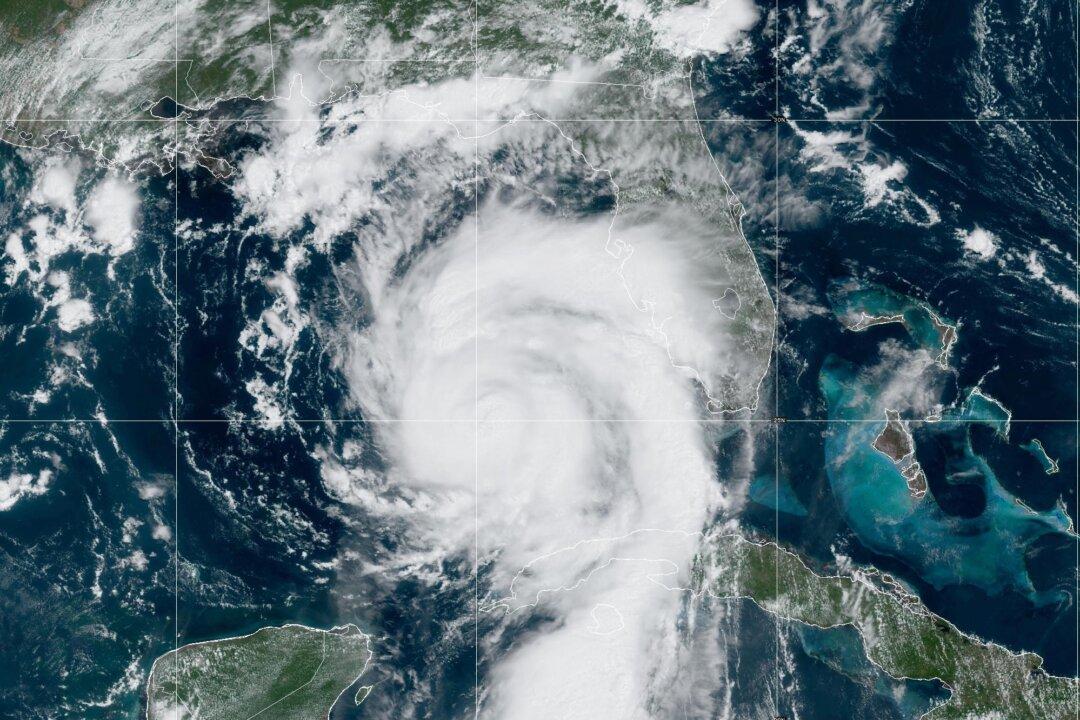Hurricane Idalia is continuing to intensify, barreling toward Florida’s Big Bend as forecasters and state officials warn its projected 120 mile-per-hour winds could push a 15-foot wall of water ashore when it makes landfall sometime after 8 a.m. on Wednesday.
“It is definitely going to hit the Big Bend—everywhere in the Big Bend,” Florida Gov. Ron DeSantis said, issuing his fourth update of the day during a 6 p.m. press conference at the Florida Emergency Operations Center (EOC) in Tallahassee an hour after the National Hurricane Center’s (NHC) posted its 5 p.m. bulletin.





